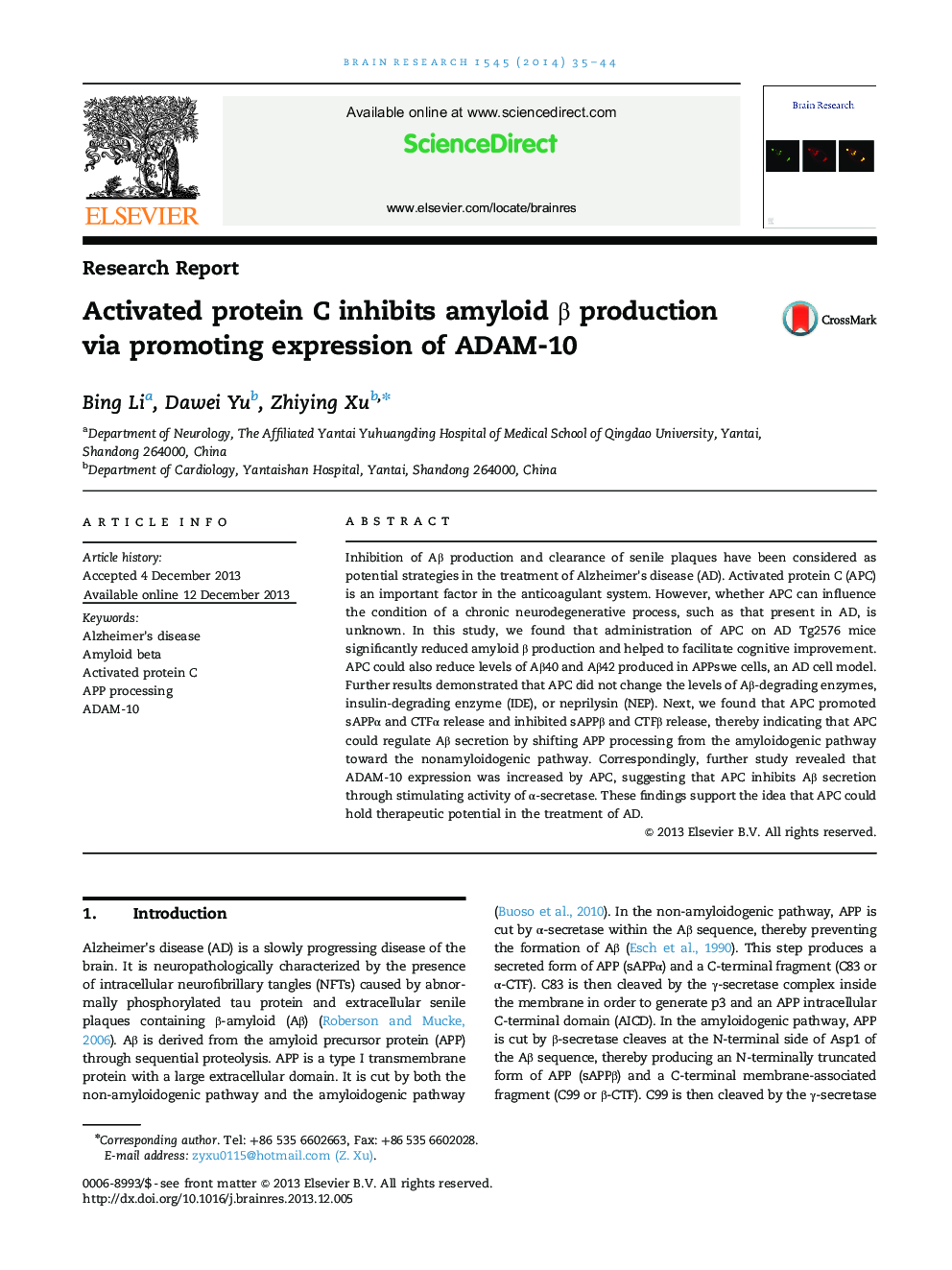| کد مقاله | کد نشریه | سال انتشار | مقاله انگلیسی | نسخه تمام متن |
|---|---|---|---|---|
| 4324496 | 1613894 | 2014 | 10 صفحه PDF | دانلود رایگان |

• APC reduces amyloid β production and senile plaque in AD Tg2576 mice.
• APC facilitates cognitive improvement in AD Tg2576 mice.
• APC did not change the levels of Aβ-degrading enzymes IDE and NEP.
• APC shifts APP processing from the amyloidogenic toward the nonamyloidogenic pathway.
• APC increases the ADAM-10 expression but not BACE1 or PS1.
Inhibition of Aβ production and clearance of senile plaques have been considered as potential strategies in the treatment of Alzheimer's disease (AD). Activated protein C (APC) is an important factor in the anticoagulant system. However, whether APC can influence the condition of a chronic neurodegenerative process, such as that present in AD, is unknown. In this study, we found that administration of APC on AD Tg2576 mice significantly reduced amyloid β production and helped to facilitate cognitive improvement. APC could also reduce levels of Aβ40 and Aβ42 produced in APPswe cells, an AD cell model. Further results demonstrated that APC did not change the levels of Aβ-degrading enzymes, insulin-degrading enzyme (IDE), or neprilysin (NEP). Next, we found that APC promoted sAPPα and CTFα release and inhibited sAPPβ and CTFβ release, thereby indicating that APC could regulate Aβ secretion by shifting APP processing from the amyloidogenic pathway toward the nonamyloidogenic pathway. Correspondingly, further study revealed that ADAM-10 expression was increased by APC, suggesting that APC inhibits Aβ secretion through stimulating activity of α-secretase. These findings support the idea that APC could hold therapeutic potential in the treatment of AD.
Journal: Brain Research - Volume 1545, 30 January 2014, Pages 35–44